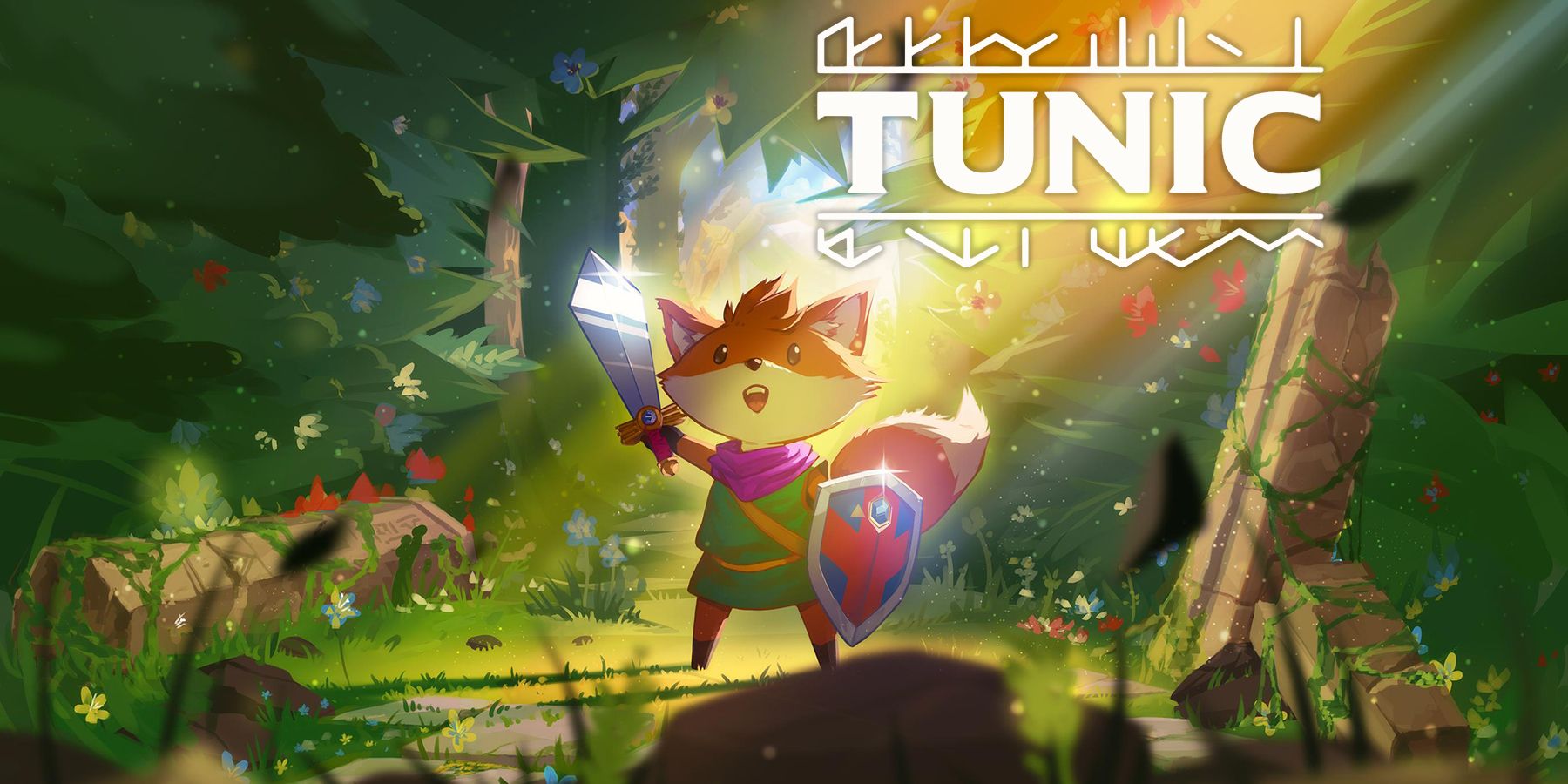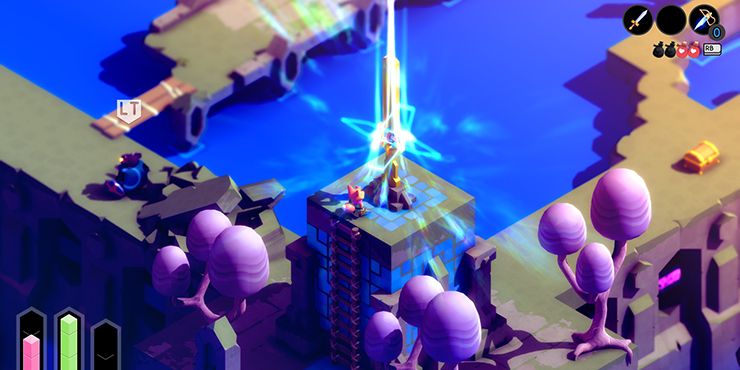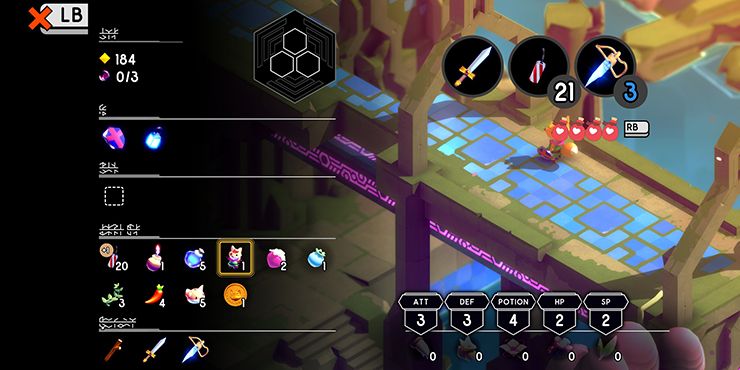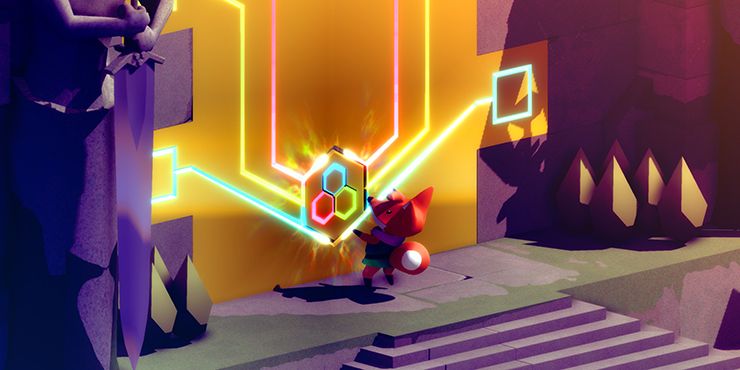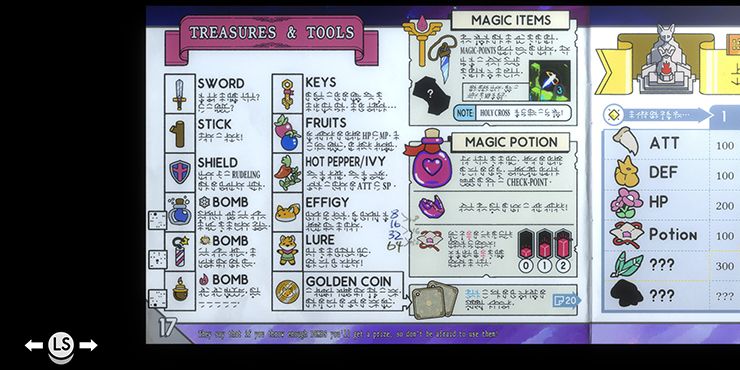Seven years ago, developer Andrew “Dicey” Shouldice announced an upcoming Zelda-like isometric adventure game called Tunic. Featuring an unnamed fox hero, Tunic resembled an animated picture book and quickly drew the attention of gamers looking for a nostalgic trip back to the days of the NES. Tunic has finally been released on PC and Xbox consoles, but there are a few caveats players may want to take into consideration before setting out on their journey.
Tunic’s simplistic, colorful, and charming visual presentation will immediately draw players into the world, enticing them to poke their heads into every corner and uncover secrets. In a recent Game Rant interview with Tunic’s developer, Shouldice stated that it was this “feeling of wonder and exploring the unknown that I wanted to capture.” Mission definitely accomplished, as the game is masterfully designed to conceal passages and treasures in plain sight, with some paths almost Escher-esque in their arrangement.
Tunic doles out its secrets gradually, reserving some facets of gameplay for discovery as the game progresses. Just when the player thinks they are nearing the end, they wander into a new area and find more tasks to complete. Many players will feel glee and maybe a little pride as they locate a well-hidden shortcut around a group of tough enemies or stumble upon a nearly invisible path to a cache of gems. Treasure chests, upgrades, and even entire dungeons are the rewards for observant and curious gamers.
The skillful art design extends to the game’s protagonist and enemies, who would all sell well if reimagined as stuffed animals. Tunic’s style will appeal to almost everybody, young or old, with its cutesy and simplistic design, vibrant colors, and tranquil music. The game truly is a gem for those with the patience to push through to the end, but some may be surprised at how difficult the game can be. Players should not let the game’s pleasant packaging lull them into complacency, because it conceals a world that is at times unforgiving.
It won’t take long for players to realize that Tunic is a Souls-like disguised as a brightly colored storybook, complete with parrying, stamina, and bonfires. The game can be frustratingly difficult, particularly in the beginning when the player is learning Tunic’s logic and mechanics. As the nameless fox protagonist upgrades his defense, attack, and health, the game may begin to lean more towards satisfyingly difficult.
The major fights are nearly on par with Dark Souls when it comes to difficulty, and being defeated is perhaps even more deflating because it is less avoidable. Unlike Souls games, success in Tunic sometimes relies as much on luck as it does ability. The difficulty of this game does not always present a challenge that can be overcome with practice, skill, or leveling up. At times it feels like difficulty with no purpose, granting only a feeling of relief rather than accomplishment afterward.
This will make the game a test of determination for some players, diminishing what could otherwise be a thoroughly fun and magical experience. It's possible to get stuck within five minutes of starting, and the first feelings that some players will associate with Tunic are frustration and being lost. The many hidden paths that make the game so engaging to explore are also a hindrance. The world of Tunic can at times feel labyrinthine and confusing, and even locations that have been visited before can be difficult to find again. The situation isn’t improved by the fact that an area’s map may not be found until the player has already floundered their way halfway through it.
The Zelda-inspired indie game can theoretically be completed in about 15 hours, but it’s entirely possible to hit the 30-hour mark before rolling credits. Unlike some games with intentionally elevated difficulty, it’s not always easy or even possible to simply level up and come back later. The items used to increase attack and defense are limited in each area and, if the player has a tough time downing enemies, the only options are perseverance or quitting.
A lot of time will be spent dying and fighting the same enemies repeatedly, and this leads to the next sticking point with Tunic. The controls can feel clunky and make the game more difficult than it would be otherwise. While enemy attacks can be figured out fairly quickly, that knowledge will not necessarily lead to victory, and dying as a result of slow or awkward controls makes every trouncing that much more infuriating.
An example of the questionable controls is the lock-on mechanic, which doesn’t always target the enemy closest to the player. It seems to arbitrarily lock onto anybody, anywhere on the screen. While the player faces a group of enemies within melee range, the lock-on system might target a foe on an inaccessible hilltop. So the player has to manually switch targets, during which time they are more likely to take damage and die because they're not dealing with the enemies actively attacking them. It would also be a boon if the lock-on were a toggle because, at any given moment during combat, the player has to juggle three to five buttons: lock-on, shield, attack, dodge, and target select. It’s a feat that not everybody will be able to pull off.
A primary design element of Tunic is its simplicity and, while that’s a pleasing aesthetic, it’s also at times detrimental to gameplay. One of the most puzzling aspects of the game is the plethora of items whose uses are unclear. Without blind experimentation (which can lead to some funny moments, to be fair) players may run through the entire game without ever learning what some of the items in their inventory are for.
Even the game manual, which is unlocked in bits and pieces, doesn't clarify much because half of it is written in stylized, cryptic writing. This enigmatic language is charming and adds to the game’s sense of mystery, but it also leads to a persistent feeling of bewilderment. For example, at the very beginning of the game, players loot a key, but they’re never told it’s a key. It doesn't really resemble one, players can't inspect it to gain some insight, and the manual page describing it isn't found until later in the game. So it's possible to run around aimlessly for 10 minutes with this item in the inventory, wondering how to progress to the next area.
Tunic is more than a Zelda clone and will win over many players — those who enjoy the art style, the relentless challenge, the sense of exploration and discovery. But people picking up the game should be aware that it is a niche title that some gamers simply won’t have the patience to complete. Those who do take up the gauntlet will find an enjoyable, albeit sometimes frustrating, experience that fully deserves praise.
Tunic is available on PC, Xbox One, and Xbox Series X/S. Game Rant was provided a Steam code for this review.

